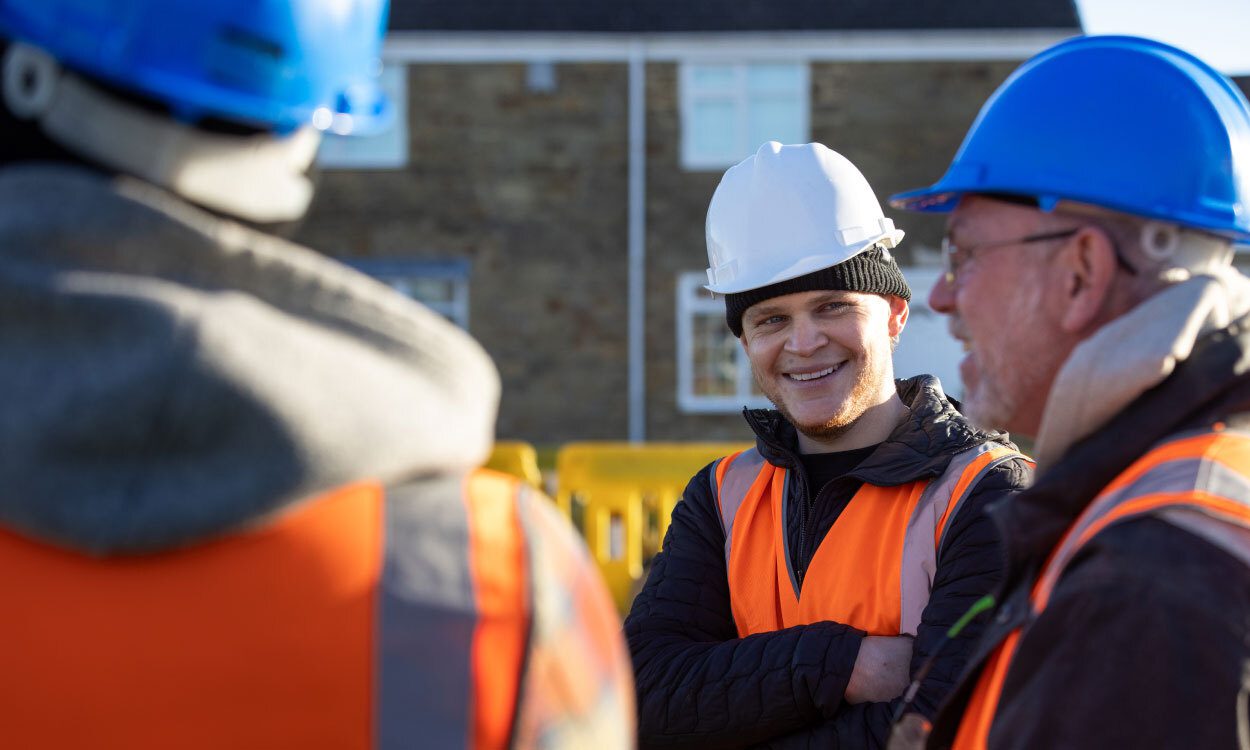

17 Oct 2025
What is a Construction Site Briefing?
The construction industry is often fast-paced and high-risk, meaning effective communication is more important than ever. From making sure everyone knows their roles to maintaining the highest health and safety standards, how information is shared can make or break a project. One of the simplest yet most effective ways to achieve this is through a construction site briefing.
At Contractwise, we understand that effective communication on-site not only keeps a project running smoothly but also supports wider compliance and risk management. This is especially the case when it comes to CIS compliance, payroll audits and eliminating HMRC reclassification.
In this article, we’ll explore what a construction site briefing is and how you can make yours as effective as possible.
Read on for more information…
What is a construction site briefing?
A construction site briefing is a short, yet frequent meeting that provides everyone on a site with essential information about the day’s activities, safety information and project priorities. They are typically led by a site manager or supervisor and take place on a daily basis. These briefings are held before the work begins and ensure every team member fully understands their responsibilities and the risks associated with the day’s tasks.
Unlike lengthy project meetings, a site briefing should be concise and focused. Its main purpose is to align everyone on the job’s objectives and ensure the team operates safely and efficiently.
The key goals of a construction site briefing include:
Clarifying daily objectives
Communicating hazards and project changes
Reviewing safety protocols
Assigning responsibilities clearly
Encouraging communication between management and the workers
By making sure everyone on the site is informed and engaged, construction site briefings can help reduce mistakes and keep everyone accountable. In short, without them, your project is at risk of failure.
What is a toolbox talk?
A toolbox talk is another type of meeting on a construction site. They usually focus on health and safety topics and tend to be shorter and more informal than a full construction site briefing. They often only last five or ten minutes, and it is where workers discuss a particular safety or logistics issue before starting work.
Toolbox talks are designed to remind workers of potential hazards, safe practices and legal obligations. Some examples of topics a toolbox talk might cover include:
Safe lifting techniques
Working at a height
Electrical safety
PPE requirements
Fire prevention
Emergency procedures
These sessions are more about promoting a proactive health and safety culture, and they encourage employees to speak up if they have any concerns. Both site briefings and toolbox talks are invaluable for construction companies. However, it is important to recognise that they serve slightly different purposes. Understanding the distinction between the two can help improve efficiency and safety on a project.
What is the difference between a site briefing and a toolbox talk?
While both site briefings and toolbox talks share a focus on communication and safety, there are some key differences.
A construction site briefing is much broader and is designed to:
Outline the day’s objectives
Coordinate teams and trades
Communication changes to the project
Reinforce health and safety
On the other hand, a toolbox talk is more specific to a certain job, tool or piece of equipment. They focus exclusively on one issue and ensure workers fully understand the risks in relation to that subject.
In short, a site briefing is all about what is being done that day and how to do it safely, whereas a talkbox talk is about how to stay safe while performing a particular task.
What should a construction site briefing include?
A successful site briefing goes beyond just reading out a checklist; it needs to be clear, collaborative and promote understanding and cooperation. Some key elements include:
Clear communication: Use straightforward language that avoids jargon to ensure everyone understands the message.
Ownership of tasks: Make sure everyone in the team knows their role and what they need to achieve.
Flexibility - Encourage feedback and be ready to adapt your plan if new issues crop up.
Commitment to health and safety: Highlight site-specific risks and reinforce the importance of proper health and safety in these areas.
Proactive solutions: Make sure you discuss potential issues before they arise so you know how to tackle them.
Collaboration between trades: Ensure that all contractors and subcontractors understand how their work interacts with others on the site.
By focusing on these principles, you’ll create a culture where each and every worker feels informed, responsible and supported.
How to make construction site briefings effective
Even though site briefings are short, they can be powerful if handled properly. Here are a few tips to make them more effective:
Prepare ahead of time
Don’t improvise. Gather the day’s key updates, review risk assessments and identify any areas of concern before the briefing begins.
Set clear objectives
Keep the focus on what needs to be achieved on that day. Make sure you are as specific as possible about goals, timelines and deliverables.
Use visual communication tools
The use of diagrams, whiteboards or digital visuals can help to convey complex information quickly and clearly. Sometimes, your employees may include visual learners, and this style of messaging will work better for them.
Keep them short
Your briefings should be concise, so aim for no more than 10 minutes. If the meetings are too long, people’s attention may wander, resulting in disengagement and diminished productivity. You want people to understand the messages you’re communicating, and long meetings risk this being lost.
Encourage participation
Allow time for questions or feedback from the team. Workers on the ground will often spot issues before managers do, so it’s important to provide a forum for this to be shared.
Monitor results
Track performance and safety outcomes to ensure your briefings are having the right impact. If not, adjust the meetings based on what is working.
At Contractwise, we protect contractors and subcontractors with our range of comprehensive CIS services. For more information about how we can make your operations easier, contact our expert team today.